
New!

Space Age Design
Midcentury Futuristic Atomic Googie Jet Age
In The Kitchen
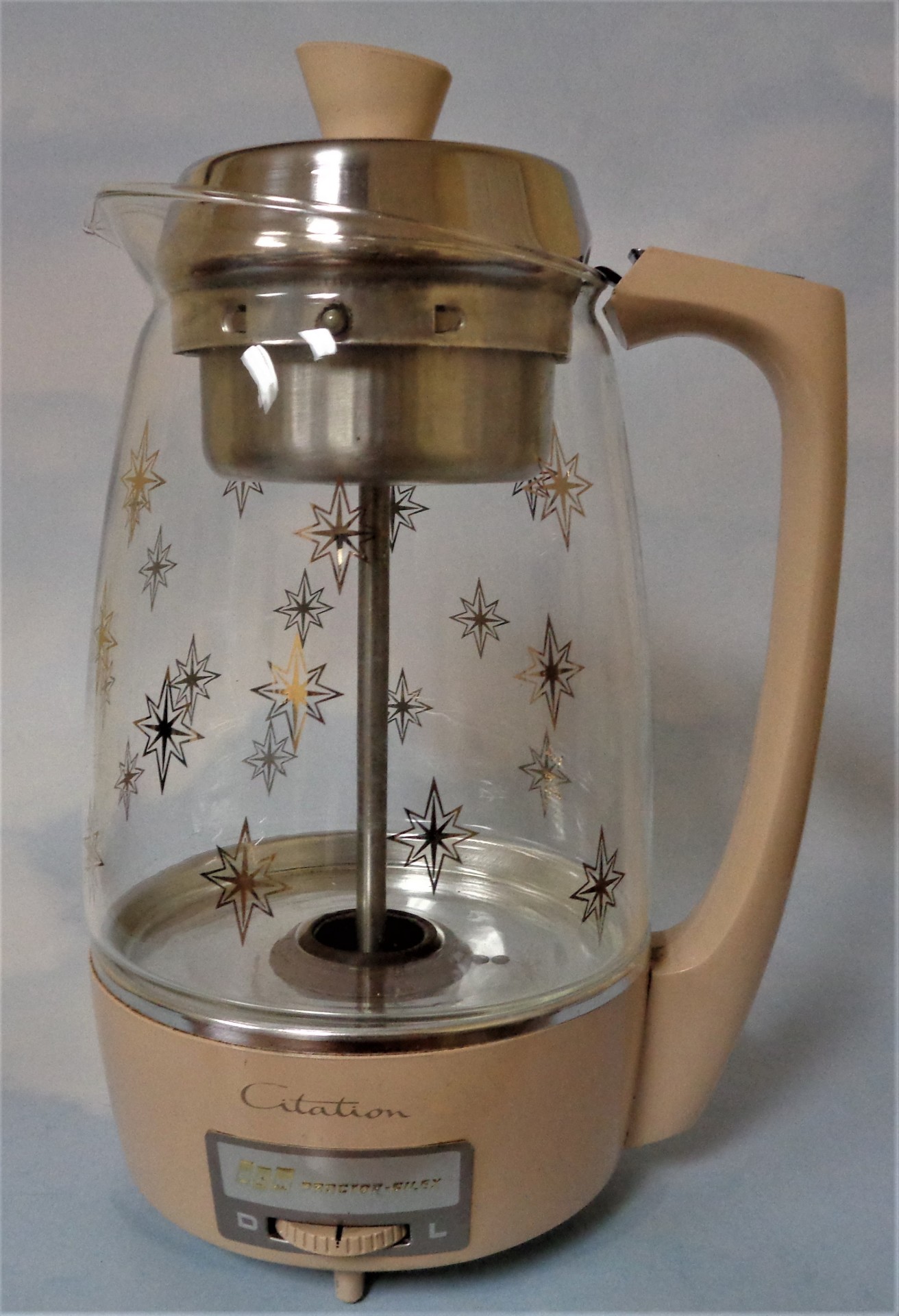
The Space Age was as exciting in the kitchen as anywhere else. In the 1950s if a woman's place was in the kitchen, it wasn't such a bad place to be. There were huge advancements occurring and more promised. The drudgery of spending all day cooking and cleaning was gone. Tasks that took hours could now be done with the touch of a button. Kitchens were roomier, with more cabinet space, and had a cohesive look. They were less formal and more friendly. Younger women affluent enough, did not want their mother’s kitchen. They eagerly bought the latest futuristic styles. Kitchen colors became more feminine with lots of pastels and lighter woods used. Appliances that were formerly just white now came in a plethora of colors. If your new oven had a certain color, then you needed to buy a refrigerator in the same color. Even the formerly black telephone was now offered in many pastel colors, similar to the appliances. Industrial designers took a more prominent role in the look of the appliances and added many futuristic touches.
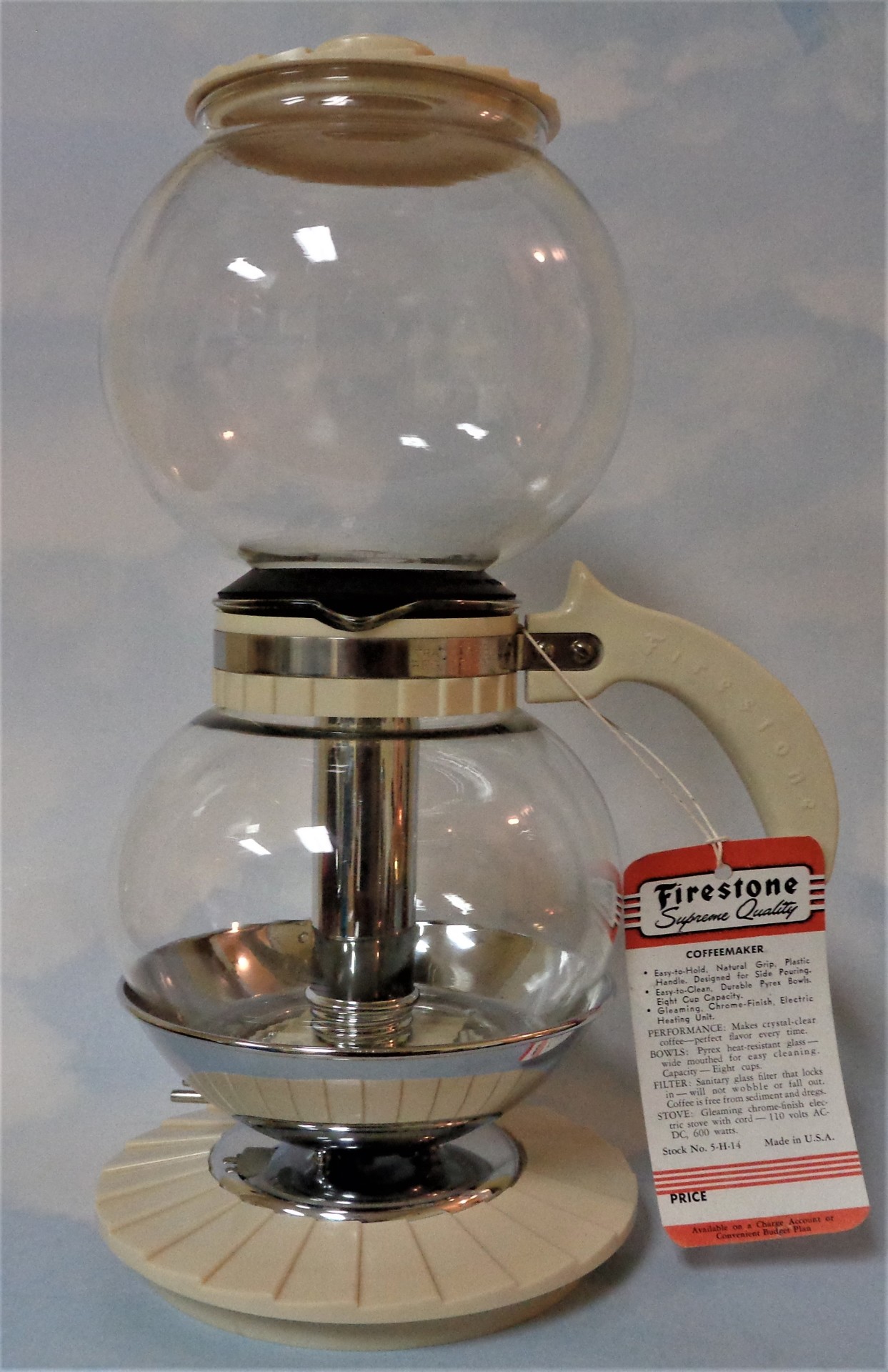
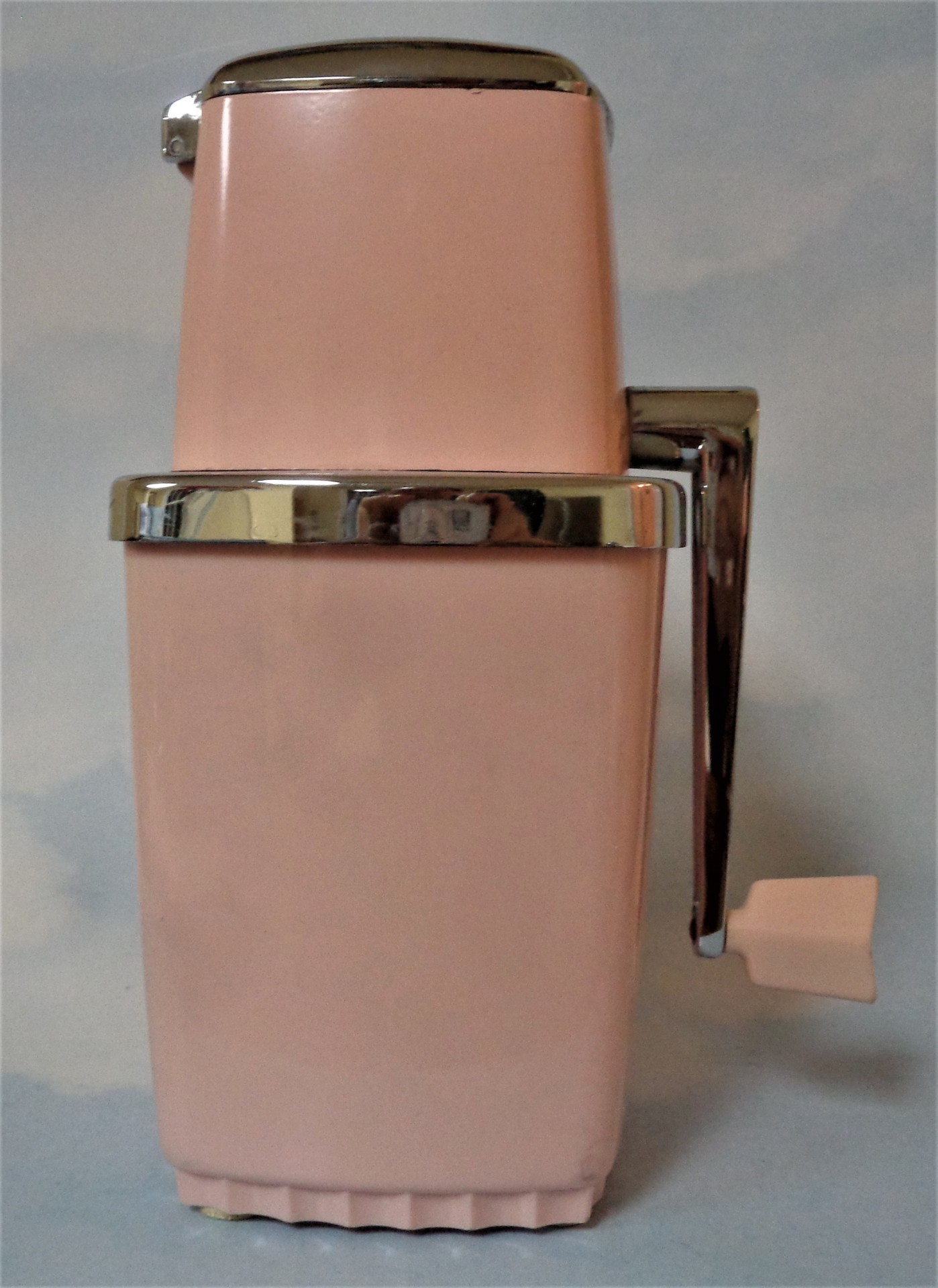
Proctor-Silex Citation Percolator

Firestone coffee maker
Maid of Honor Ice Crusher
In suburbia, the house party became more common and the wife wanted the newest and latest to impress her guests. With the war ended, families were back together. The kitchen was no longer just for cooking. It was now a social hub of the house, a place to meet, eat and have conversation.
In 1957 Whirlpool built a traveling exhibition called the Miracle Kitchen. that went around the country. Some of the advances were; remote controlled appliances, monitoring food supplies, video to check the nursery and check visitors at the door, a mobile floor sweeper, and automatic food preparation devices. Many of these features have come to fruition.
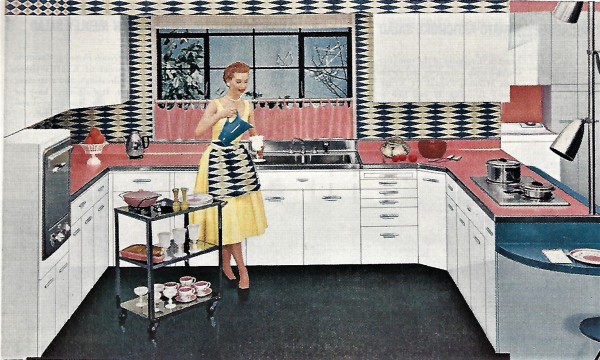
Frigidaire ad From Better Homes and Gardens 3/59.

Ad for Republic Steel in Better Homes and Gardens June, 1955.
The purchase of a large appliance was for more than just its function. Like a car it was to impress the neighbors and family. New appliances popped up regularly such as the dishwasher, electric can opener, ice crusher, countertop rotisserie oven, popcorn popper and much more. Existing appliances got new features. Refrigerators and stoves got more capacity, timers, ice makers, swing out shelves and defrosters. Ronald Reagan as a spokesman for GE stated “progress is our most important product”. Vice President Nixon in a “Kitchen Debate” with Russian leader Nikita Krushchev spoke of American kitchens filled with the latest automatic devices. Krushchev had little to counter.
The promise of even more new innovations like the microwave oven kept people looking to the future. Appliances were now built into the cabinets. New countertop surface materials emerged. Plates were no longer just china, plastics such a Melmac became common. Corning created its durable glass impervious to heat and cold. This product took off in the 1960s. Another innovation was the proliferation of Tupperware parties selling food preservation containers. If that wasn't enough, in 1954 Swanson introduced the first TV dinner. No more recipes or preparation.
For more on the space age kitchen, read the book Atomic Kitchen by Brian Alexander published in 2004.
Ad for Frigidaire in Better Homes September 1955



Ad for Hotpoint in September 1963 Better Homes
Regal Percolator and dispenser, c. 1965
Sparklet ice crusher. Decorated with stars in the night sky.


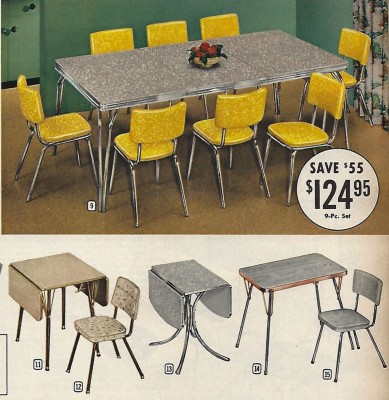
Ad for Kohler in Better Homes March, 1959 featuring an extended sink. Why don't they make these anymore?
The ubiquitous vinyl kitchen table. This from an Arvin ad in Better Homes March, 1952
These vinyl kitchen tables from the 1959 January-July Montgomery Ward catalog.


The graphics on this package had many space age features such as, smiling face, angular New!, Wunda and a star.
Holt Howard imported a whole series of these condiment jars imported from Japan around 1960. Very collectible now.
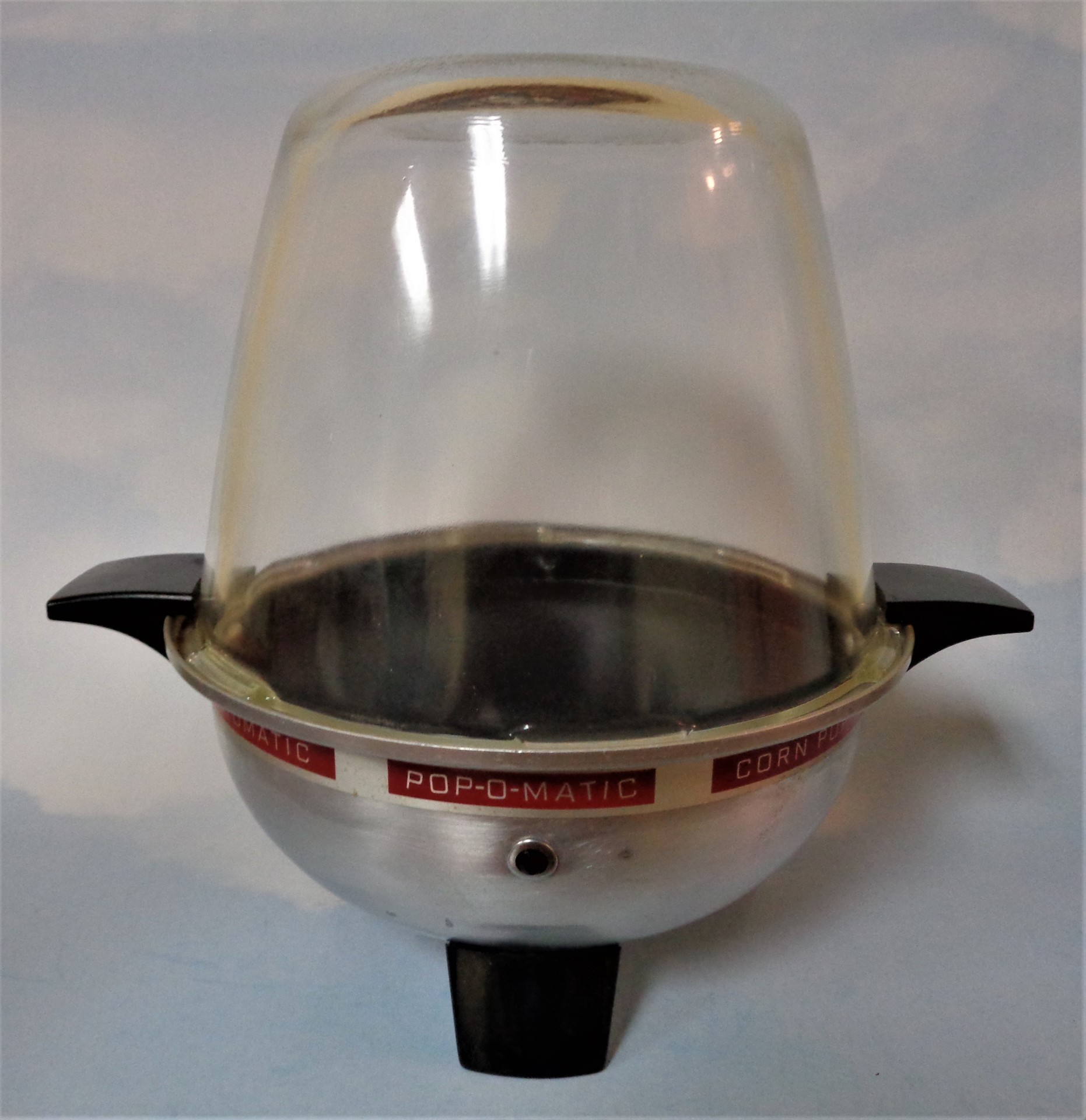


Tupperware wasn't just for food storage.
Kinfolks Pop-O-Matic popcorn popper. Straight out of the Jetsons.
Cocktail shaker


Wear Ever Hallite covered pan. Aluminum and copper.

Gailstyn glass covered bowl with warmer. Fondue anyone?
Ice cube maker, unmarked.



Cory Coffee Percolator
Frigidaire butter box
Oster food grinder. Is it from Mars?



Regal Supreme aluminum ice bucket. Insulated.
Neocraft Insulated Metal ice bucket. Vacuum insulated, glass top.
Lacy Automatic Hot Fudgester, Chicago.

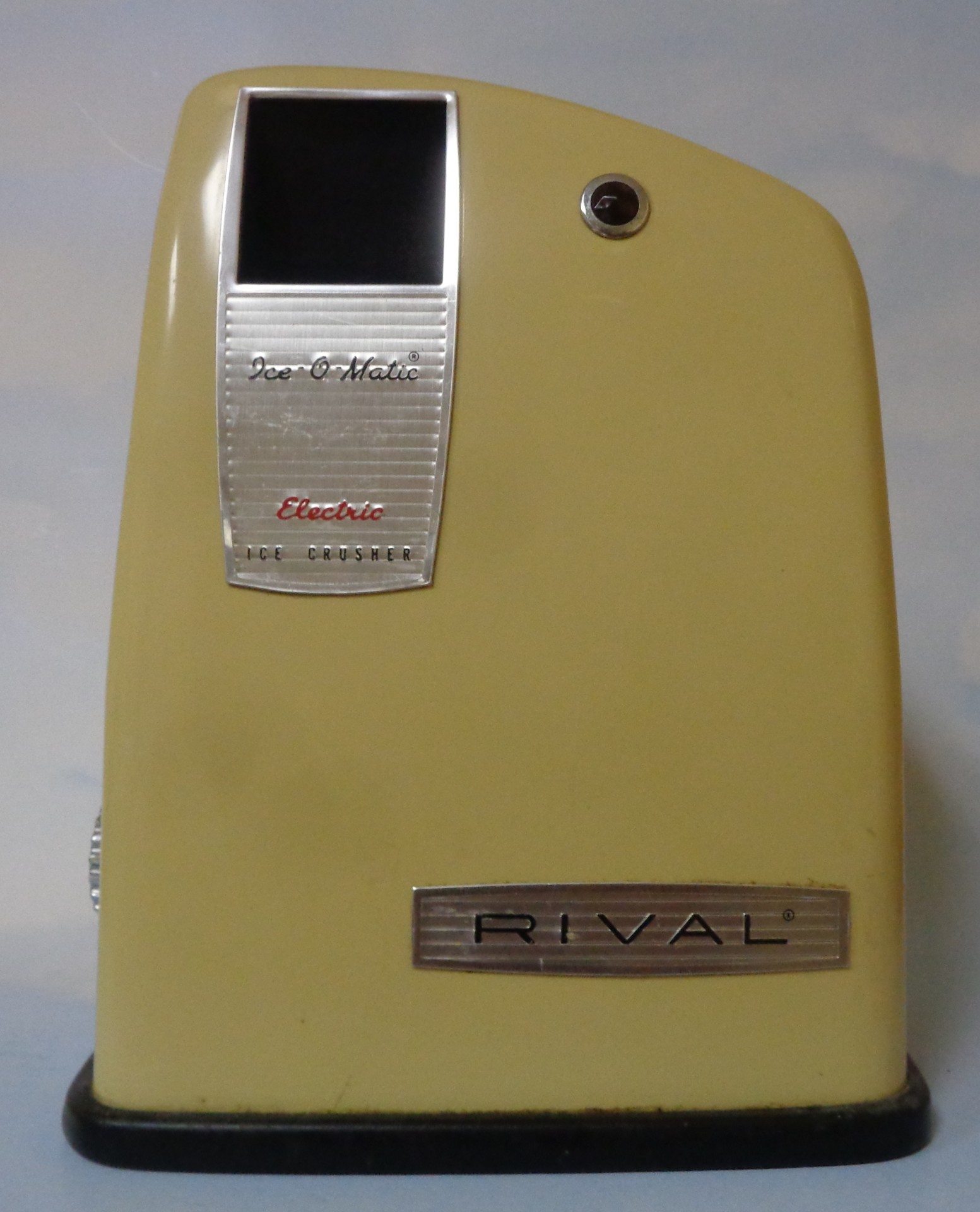
Genie phone by American Telecommunication, a subsidiary of General Dynamics. The phone had moved to the kitchen.
Rival Electric Ice-O-matic Electric Ice Crusher. Heavy



The Thermos is dated 1959. The torpedo shaped Smoothie canister is by Ralmac of Grand Rapids.
Dormeyer Automatic Electric Coffee Maker
Oster 10 cup electric percolator



Westinghouse mixer
Osterizer blender. These things lasted forever. Big seller.
Radio wave pitcher


Norge refrigerator jar. Norge was a major refrigerator brand in the 1950s.
Hamilton Beach ad from the December 1955 Better Homes magazine.


Frigidaire ad in the September 1955 Better Homes
Kentile floors ad in the April 1964 Better Homes


Rubbermaid started out in the 1930s making rubber dust pans and wire dish drainers. By the 1950s, they made all kinds of household products in all different colors.

Hotpoint ad in the April, 1964 Better Homes.

13 3/4" glass platter by Gay Fad. Gay Fad was in business from 1945-1963. They decorated plain glass items made by others, primarily tumblers. They were prolific to the point many midcentury enthusiasts know their work. Definately not dishwasher safe.
The electric knife sharpener was one of the new kitchen gadgets of the Space Age. This one by Handy Hannah of Waltham, MA. Based on the color, knife sharpeing was not just for men anymore.

Tile sample board showing some of the most common late 1950s bathroom colors.